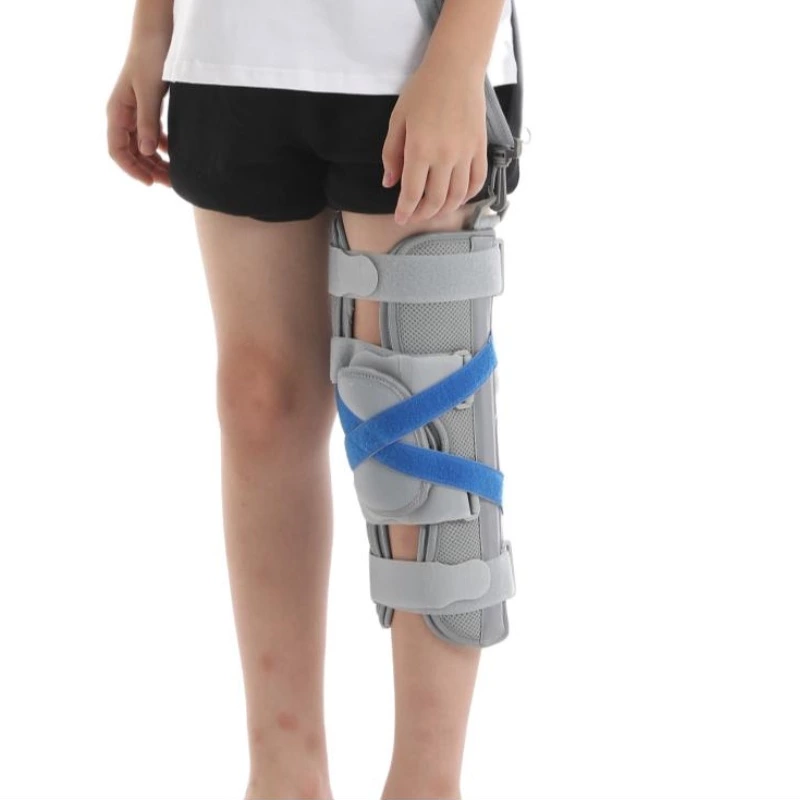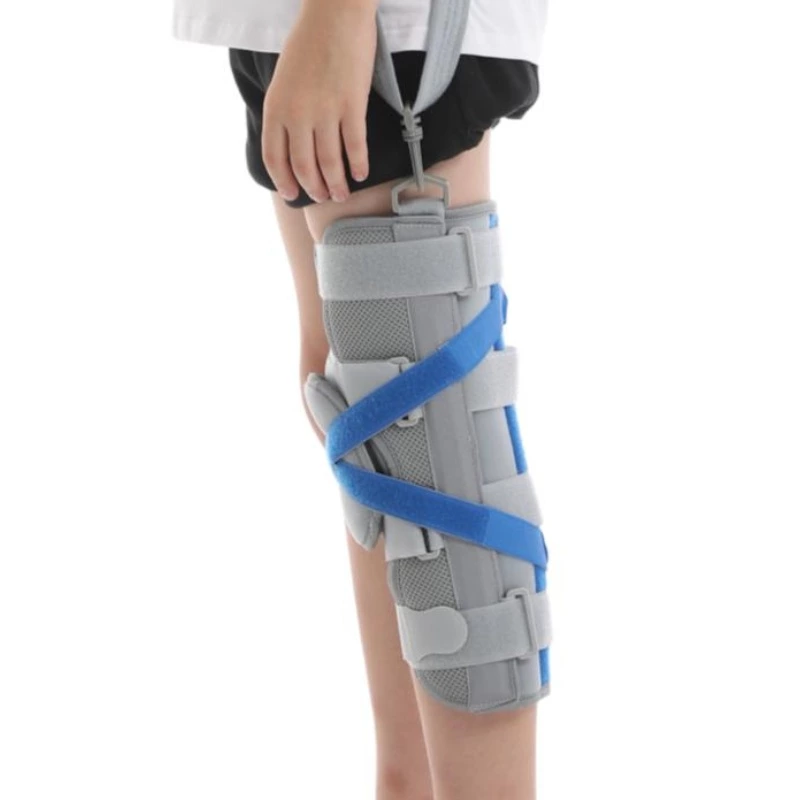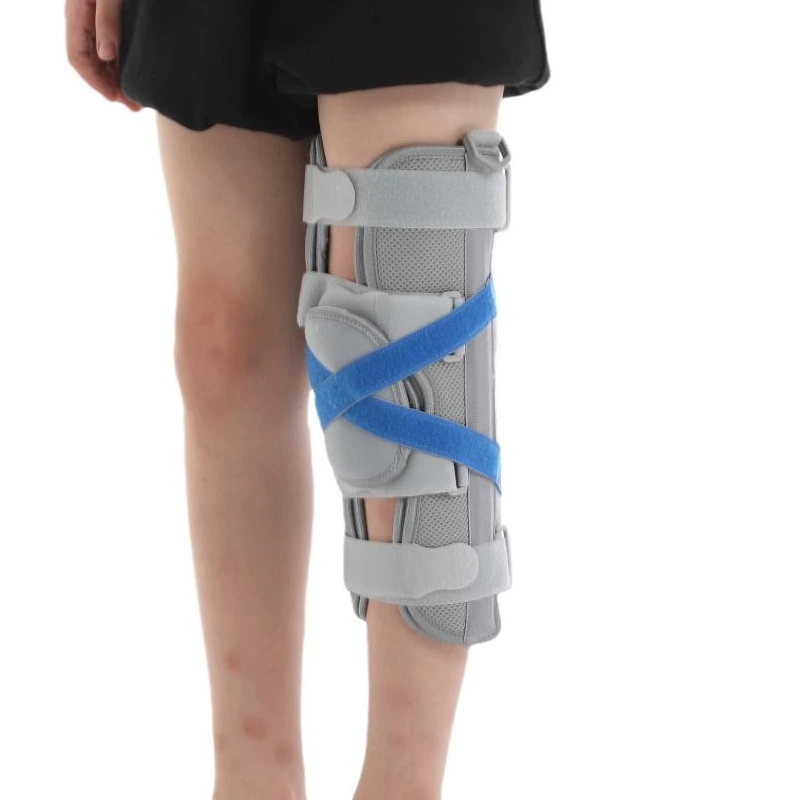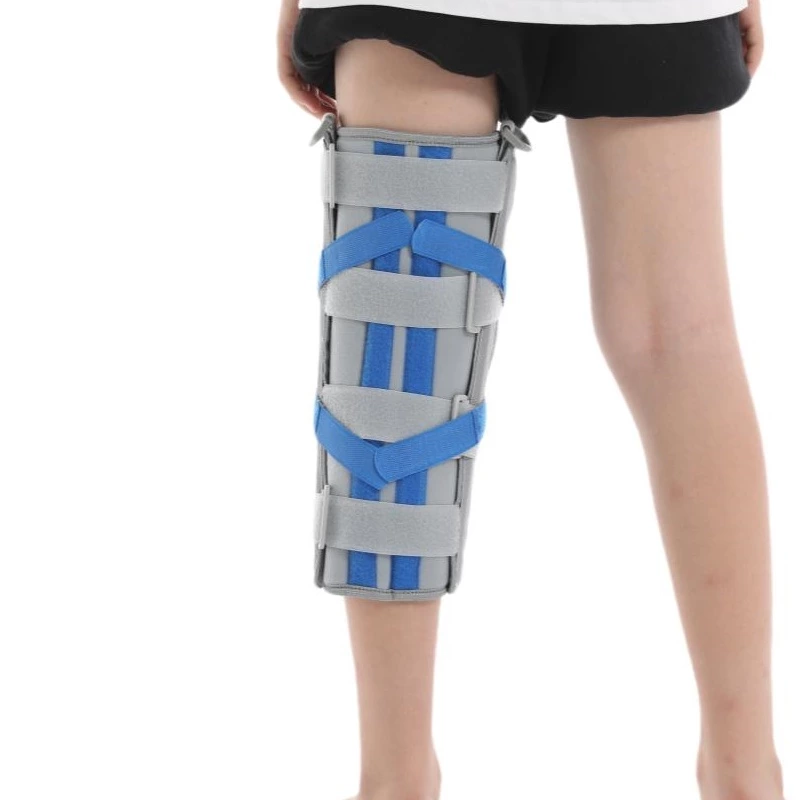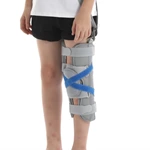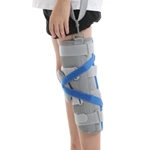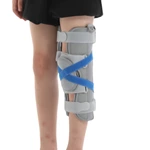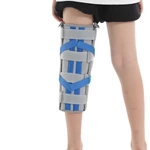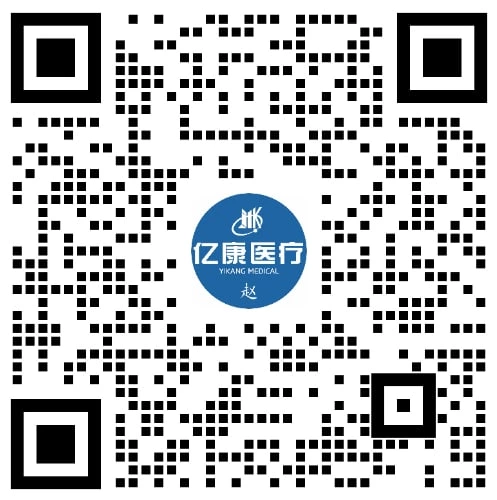Child's Knee Immobilizer Brace Pediatric Leg Immobilizer
Our child's knee immobilizer brace applicable to knee joint fractures, soft - tissue injuries and joint dislocations; juvenile - onset idiopathic arthritis, infectious arthritis; congenital knee joint dislocation or subluxation, the initial stage of correction for genu varum (O - shaped legs) or genu valgum (X - shaped legs); postoperative rehabilitation of the knee joint (fracture fixation, ligament repair).
- Code
- F201-9
- Size
- S/M/L
- Color
- Gray
Indications
1.Trauma-related disorders
- Knee joint fractures: Children are naturally lively and active, and accidental fractures may occur during play. For example, jumping from a height or being hit by a heavy object on the knee joint can lead to fractures of the tibia, femoral condyle or patella. The pediatric knee immobilizer can help fix the fractured part, reduce the movement of the fracture ends, thereby alleviating pain and creating a relatively stable environment for fracture healing.
- Soft tissue injuries: During sports activities, such as sudden twisting or collision while running or playing football, it is easy to cause injuries to the ligaments around the knee joint (such as the anterior cruciate ligament, posterior cruciate ligament, medial and lateral collateral ligaments), meniscus or muscles (such as the quadriceps femoris, hamstring muscles). Using a fixation band can limit the range of motion of the knee joint, avoid further traction or compression of the injured soft tissues, and help with the repair of the injuries.
- Joint dislocation: When subjected to relatively large external forces, children's knee joints may be dislocated. After reduction, the kids knee brace can play a role in stabilizing the joint, preventing recurrence of dislocation, and at the same time giving the tissues around the joint enough time to recover.
2.Inflammatory diseases
- Juvenile idiopathic arthritis: This is a common chronic arthritis in childhood. When the knee joint is affected, symptoms such as joint swelling, pain and limited mobility will appear. The youth knee brace can reduce the movement of the joint during the inflammatory episode, relieve pain, and to some extent relieve the pressure inside the joint, assisting in the control of inflammation.
- Infectious arthritis: If the knee joint develops inflammation due to infection by bacteria, viruses, etc., in addition to anti-infective treatment, using a fixation band to fix the knee joint can reduce further damage to the joint tissues by the inflammation and at the same time avoid the spread of the infection caused by joint movement.
3.Congenital or developmental diseases
- Congenital knee joint dislocation or subluxation: Some children are born with abnormal knee joint positions. The kid's leg immobilizer can be used as an auxiliary treatment method to help correct the position of the knee joint, gradually restore its normal anatomical relationship, and at the same time provide a basis for subsequent treatments (such as physical therapy, surgical treatment).
- Genu varum (O-shaped legs) or genu valgum (X-shaped legs) correction in the initial stage: For children with mild genu varum or genu valgum, in the initial stage of conservative correction, the children knee immobilizer can guide the growth and development of the knee joint bones through appropriate pressure and fixation, improving the appearance and mechanical structure of the legs. However, it should be noted that this corrective effect is more effective for children who are younger and whose bone development is not yet mature.
4.Postoperative rehabilitation
- Knee joint surgeries (such as after internal fixation of fractures, ligament repair surgeries, etc.): After surgery, children's knee joints need a period of time to recover. The knee joint fixation band can fix the knee joint, prevent the surgical site from being accidentally interfered by movements, ensure the surgical effect. And with the progress of rehabilitation, it can also adjust the tightness or range of fixation at an appropriate time according to the doctor's advice, assisting children in knee joint rehabilitation exercises.

